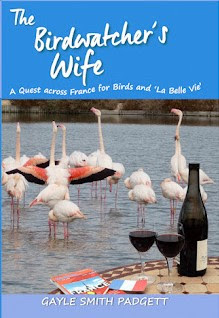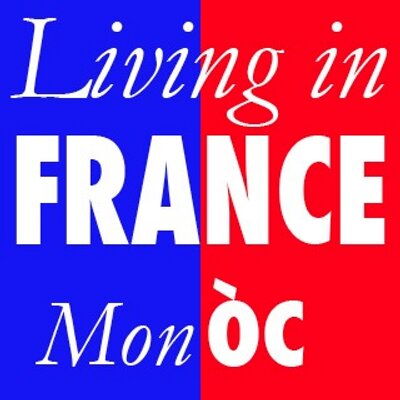
Saturday, October 31, 2009
Appy Alowine!

In last Sunday's New York Times, Peter Mayle wrote about Halloween in Provence and, predictably, it's funny. Read it here.
Illustration by Katia Fouquet via The New York Times.
Labels:
LIFE IN PROVENCE,
PETER MAYLE
Wednesday, October 28, 2009
SWF Seeks Date for El Bulli
So is this the next big foodie romantic comedy waiting to happen or what?
Jules Clancy is a cookbook author and food blogger in Sydney, Australia and the type of girl who plans her holidays around restaurant reservations. "I'm always thinking about my next meal and have excellent table manners!" she says.
More than a year ago, Jules and her boyfriend somehow got themselves a reservation at chef Ferran Adria's Michelin three-star El Bulli on the Costa Brava in Catalonia--thought by many to be the best restaurant in the world. They made plans for a trip to Spain and dinner on December 15th.
It's notoriously difficult to snag a table at El Bulli: in 2008 there were more than 2 million requests for 8000 reservations.
Then then the couple broke up--and Jules got custody of the reservation. "Last month, sadly, the Irishman and I parted ways," Jules wrote on her blog. "And so I found myself with a ticket to Spain, a reservation at the best restaurant in the world--and no one to share it with."
It's notoriously difficult to snag a table at El Bulli: in 2008 there were more than 2 million requests for 8000 reservations.
Then then the couple broke up--and Jules got custody of the reservation. "Last month, sadly, the Irishman and I parted ways," Jules wrote on her blog. "And so I found myself with a ticket to Spain, a reservation at the best restaurant in the world--and no one to share it with."
So Jules has decided to hold a competition to find herself a blind date for the evening. To enter, you email her (jules@thestonesoup.com) and tell her why you would be her best dinner companion. "Points will be given for humor and creativity," she says. The deadline is Sunday November 15th. For all the details, click here: thestonesoup.com/blog/2009/10/help-jules-find-a-date-for-el-bulli/
Bon Chance and Bon Appetit!
Bon Chance and Bon Appetit!
Labels:
CHEFS,
EL BULLI,
FERRAN ADRIA,
FOOD AND RESTAURANTS,
MICHELIN GUIDE,
SPAIN,
TRAVEL,
WEBSITES AND BLOGS
Saturday, October 24, 2009
Thursday, October 22, 2009
Man Shops Globe, Starting With France

Keith Johnson has the job everyone wants. He travels the world for the American retailer Anthropologie, buying beautiful antiques, art, decor and textiles for the stores to sell or use as display. He also commissions original pieces or finds the perfect one-of-a-kind for the company to knock off. Keith travels half the year, scouring antique fairs, flea markets, artists' ateliers, tiny shops, museums and factories.
Anthropologie if you don't know it, sells a fantastic and very unique mix of clothing, housewares, tableware, books, jewelry, fashion accessories, linens, art and crafts. At last count, they had 120 U.S. stores open; they're now expanding outside the U.S., beginning with a 10,000-square-foot London store opening tomorrow (Friday) at 158 Regent St. (anthropologie.com or anthropologie.co.uk).
And Keith is now the subject of his own TV show, called Man Shops Globe. It's on the Sundance Channel and it's great fun. In Episode #1, he runs around Paris, a large antiques fair in Avignon and the shops of Isle sur la Sorgue. He also visits with painter Aurelie Alvarez, who lives and works near Avignon, and he buys three of her pretty canvases.
The first episode of Man Shops Globe also introduced us to Michel Barma (abilisexport.com), Keith's agent in France, who lives and works in St. Remy and accompanies Keith on shopping forays to help with sourcing, negotiating, buying, and the complicated process of getting the merchandise to the Anthropologie warehouses.
In each half-hour program, Keith will travel to a new country such as Holland, India or Turkey. Michel and his wife Gabrielle will appear in a future episode, which takes Keith to Tunisia (where the glassware above was photographed).
For video clips of the show, go here:
sundancechannel.com/man-shops-globe
In conjunction with the show, Sundance is staging a contest with a shopping trip for two to France as the grand prize. To enter:
sundancechannel.com/man-shops-globe/sweepstakes/
If you'd like to know more about Anthropologie, the magazine Fast Company did a terrific article a few years back. You can read it here:
fastcompany.com/magazine/65/sophisticated.html
Labels:
ANTIQUES,
ART AND PHOTOGRAPHY,
AVIGNON,
PARIS,
PROVENCE,
PROVENCE TRAVEL,
ST. REMY,
TELEVISION,
THINGS TO BUY
Sunday, October 18, 2009
Tour d'Argent Cellar Sale

The landmark Parisian restaurant La Tour d'Argent, which dates back to 1582, is cleaning out its 450,000-bottle wine cellar, considered one of the best in the world. The Associated Press says the Michelin three-star is putting 18,000 bottles up for auction in December and that the event "has captured the imagination of French wine lovers." Tour d'Argent is selling mostly wine but also some very old spirits, such as three bottles of Clos du Griffier Cognac from 1788, the year before the French Revolution, as well as a bottle of 1875 Armagnac.
The cellar of the Left Bank restaurant, known for pressed duck and spectacular views of Notre Dame, is an important part of its history. A sign marks the spot where a brick wall was built in 1940 to hide the best bottles during the Nazi occupation.
Estimated prices at the Dec. 7th and 8th sale, by French auctioneer Piasa, range from 10€ to 2,500 to 3,000€ for each bottle of the 1788 Cognac, one of which will go to charity.
Among the wines on sale are Chateau Lafite Rothschild (1970, 1982, 1997), Cheval Blanc (1928, 1949, 1966) and Chateau Margaux (1970, 1990). The total sale is expected to bring in around €1 million.
Chief sommelier David Ridgway says the restaurant wants to cut down on wines it has in multiples to vary and modernize its selection. Buyers can rest assured the bottles aren't counterfeit — a major problem in the industry — because the restaurant bought them directly from vintners.
For more info go here: piasa.auction.fr/UK/
Or read the AP article on the NPR website:
or in the Times:
Photo: Four bottles of 1875 Armagnac Vieux, covered in a black fungus that looks "like matted cat fur," have been unearthed from the labyrinthine wine cellar at La Tour d'Argent. The restaurant will sell 18,000 bottles at auction this December. (AP Photo/Christophe Ena)
Labels:
AUCTIONS,
FOOD AND RESTAURANTS,
PARIS,
THINGS TO BUY,
WINE AND VINEYARDS
Wednesday, October 14, 2009
Todd & Gina's Excellent Adventure, Part #2
 Canadian journalist Todd Babiak, his wife Gina and their two daughters, are spending a year in Provence. Todd is writing about it for newspapers back in Canada. On Sept. 20th I published his first column, the one about the stinky mattress. Here's his second, about Speedos and rules and France. Enjoy!
Canadian journalist Todd Babiak, his wife Gina and their two daughters, are spending a year in Provence. Todd is writing about it for newspapers back in Canada. On Sept. 20th I published his first column, the one about the stinky mattress. Here's his second, about Speedos and rules and France. Enjoy! Saturday, October 10, 2009
Les Baux Rocks!
 Italian photographer Max Belloni lives fulltime outside Turin but shoots frequently in Provence. He often works with a technique called HDR, which involves the layering of images to create a deeply saturated effect, but says this photo was taken traditionally. Max writes: "Walking around the base of the castle of Les Baux de Provence, I saw this nice texture effect of the water flowing in the centuries on the vertical rocks, and I couldn’t resist the shot." To see more of Max's gorgeous photos: maxbelloni.com. To contact him directly: maxbelloni@gmail.com
Italian photographer Max Belloni lives fulltime outside Turin but shoots frequently in Provence. He often works with a technique called HDR, which involves the layering of images to create a deeply saturated effect, but says this photo was taken traditionally. Max writes: "Walking around the base of the castle of Les Baux de Provence, I saw this nice texture effect of the water flowing in the centuries on the vertical rocks, and I couldn’t resist the shot." To see more of Max's gorgeous photos: maxbelloni.com. To contact him directly: maxbelloni@gmail.com
Tuesday, October 6, 2009
How Great Is This Photo?
 I found this 2CV on FabulouslyFrench and just had to share.
I found this 2CV on FabulouslyFrench and just had to share.
Labels:
ART AND PHOTOGRAPHY,
DEUX CHEVAUX,
LIFE IN PROVENCE,
PROVENCE
Sunday, October 4, 2009
Cezanne, Van Gogh, Picasso Slept Here
 Ewa Zebrowski is a Montreal-based photographer who recently spent 10 "magical" days in Provence. She sent me the following photos and text, which I'm delighted to share with you here. Her contact info appears at the end of the photo essay.
Ewa Zebrowski is a Montreal-based photographer who recently spent 10 "magical" days in Provence. She sent me the following photos and text, which I'm delighted to share with you here. Her contact info appears at the end of the photo essay.What would a trip to Provence be without the art? I left for Provence knowing I wanted to see the Cezanne-Picasso exhibition at the Musee Granet in Aix. I never imagined that I would have a chance to see the atelier where Cezanne had worked, the bed where Van Gogh had slept and the chateau where Picasso spent the last days of his life. It's one thing to go to a museum and see great works of art. It's another to experience the places where great artists worked and lived.
I had heard about the asylum where Van Gogh lived at the end of his life (1889-1890), located near St. Remy de Provence some 32 km from Arles. I never expected to discover such a beautiful garden, building and cloister and to be so moved standing in his room seeing his small bed and seeing, with my eyes, the same view he had seen years ago. I could feel his presence and the burden of those years. I had not realized how prolific he had been while living at Saint-Paul-de-Mausole, producing many paintings including the acclaimed, well known Starry Night (1889).

In Aix I discovered that Cezanne’s atelier was close to the center of town. It's as Cezanne left it. One enters the studio on the second floor, a large high space full of selected remnants of Cezanne’s life. One sees his clothes still hanging on hooks on the wall, a few still life arrangements, his easels, paints and other reminders of his presence. One wonders who made the decision to keep the place intact and if in fact the objects are exactly where he had left them. The light in the atelier is bright, north light...a place for contemplation. While walking to his studio one notices a black and white archival photo of the atelier on permanent display in the street. Today the building is virtually hidden by vegetation.
To my great disappointment, I only saw the exterior of the Chateau de Vauvernagues. Even though we arrived at the Musee Granet before 9 a.m. to purchase tickets, we were too late. Apparently they had sold out shortly after they went on sale in January 2009 and only 30 or so are available daily. Nevertheless we decided to drive to the small town of Vauvernagues situated at the foot of Mont Sainte-Victoire, so important in the work of Cezanne. We hoped to catch a glimpse of the chateau and hoped, having traveled all the way from Canada, that we would be allowed to visit once there. A naïve wish! In 1958 Picasso had moved to the chateau. Today he and Jacqueline Rogue are buried there. The chateau is furnished and decorated as Picasso left it; many bronze sculptures remain, although there are no longer any paintings either by Picasso or from his private collection.

The chateau is owned by Catherine Hutin, Jacqueline's daughter by her first marriage. She has opened the premises to the public for the first (and possibly last) time since 1973, in conjunction with the Musee Granet exhibiton.I was sad and frustrated that I was not able to visit Picasso’s last residence. I especially wanted to see the mural he had painted in the bathroom. I wondered what Picasso would have thought of these bureaucratic restrictions. What sense to have a museum that is virtually inaccessible to the public?
Artists die and leave a legacy of their work behind. We visit museums and galleries to see their work, but rarely do we see the places where they lived and worked, retrace their history and come to more intimately understand their parcours. These places of creativity give us a deeper appreciation. They remind us that these artists really existed in time and space, at once a humbling and inspiring realization.
Photos: Cezanne's Fruit, Van Gogh's Bed, Picasso's Chateau; copyright Ewa Zebrowski, 2009.
For info on the Cezanne Picasso Show and the Château de Vauvenargues: http://www.picasso-aix2009.fr/uk/exposition_granet.asp.
For info on the Atelier Paul Cezanne http://www.atelier-cezanne.com.
For info on Saint Paul de Mausole Monastery in St. Remy: 04 90 92 77 00.
To contact Ewa Zebrowski: www.ewazebrowski.com, ezebrowski@hotmail.com
Subscribe to:
Comments (Atom)




























































.jpg)










